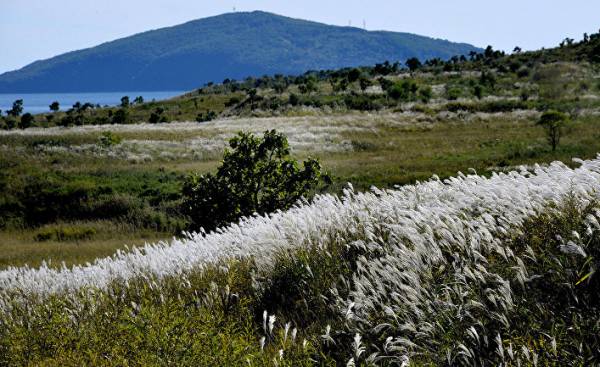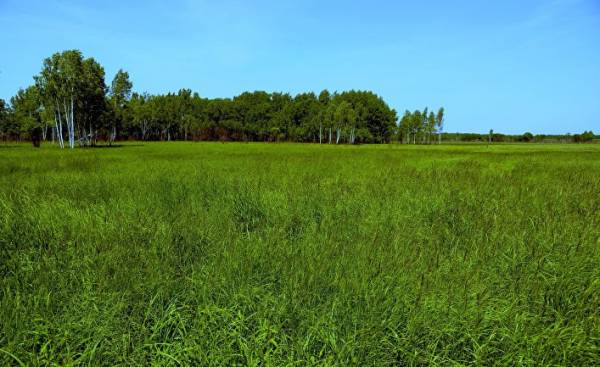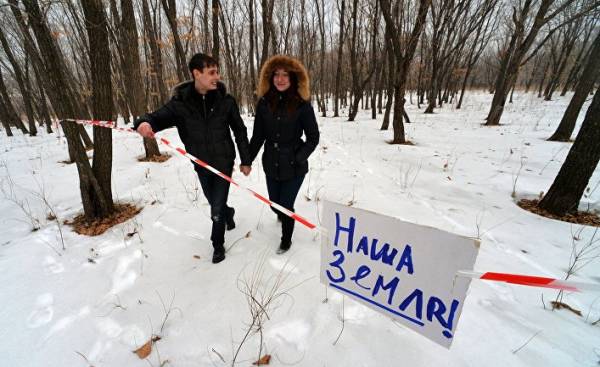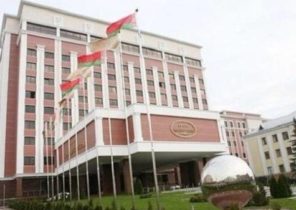
A little over a year ago, Russia launched a programme entitled “far Eastern hectare”, in which residents are offered a free plot of land in sparsely populated parts of the country in the far East to facilitate the migration of the population there.
The project was met with great skepticism, but so far, the results exceed all expectations: there were more than 95 thousand applications and registered with the new owners over 21 thousand plots of land.
Despite the ongoing criticism, analysts expect that the programme of distribution of free land could work as a catalyst for the launch of the largest waves of migration to the Russian far East since the agrarian reform of the early XX century.
Nevertheless, we need to do a lot of work to build the infrastructure and to fill a huge space. Just a program of land distribution was allocated to more than 145 million hectares.
The nine regions of the Russian Far East are responsible for 36% of the country, and lives in these areas, while only 6.2 million people, representing about 5% of Russia’s population.
For comparison, in the Chinese northeastern province of Heilongjiang, which borders Russia, lives 38 million people, although it is in size only about how two Russian far Eastern region — Magadan and Primorsky Krai.
The land is offered free of charge, however, under a certain condition: for five years a plot of land must be cultivated, namely: there should be built a house, established a farm, and the like, and then the temporary owner of the land will receive property real.
Initially, the people living in the far East, were permitted to apply only to land located in areas where they live. October 2016 has allowed them to claim land anywhere in the Far East. In February of this year, the program became available to Russian citizens throughout the country.
 © RIA Novosti, Igor Onuchin | go to photomontagist land leased as “hectare far East”, Khabarovsk Krai
© RIA Novosti, Igor Onuchin | go to photomontagist land leased as “hectare far East”, Khabarovsk Krai
Registration takes place electronically, and applicants will receive a computer card, which they can choose a plot of land, and submit it application. Officials have 33 working days to accept it, to consider and to draw up a contract. To earth may apply only to Russian citizens. “We are not planning to offer plots of land to foreigners,” — said Yuri Trutnev, presidential Plenipotentiary envoy to the far Eastern Federal district.
Historical precedents
The program of agrarian reform for the Far East, which held in the XIX century Prime Minister Pyotr Stolypin, was made in order to reduce overpopulation in the Central European part of the country.
The peasants dreamed of a land in the East of the Empire, which was not used, and the government in 1906 began to pay the expenses of families who moved to those areas. It also provided support for the construction of certain infrastructure and, in addition, gave loans for housing and purchase of agricultural equipment.
One family received 50 acres of land (Russian measure, equal to 2.7 acres), or about 50 acres. Only in 1906, more than 130 thousand people were moved to Siberia and the far East.
By 1914 emigrated more than four million people. Of these, approximately half have lived near or in the Primorsky region, where now is located the city of Vladivostok.
The Russian Ministry for Far East development and planned implementation of the current programme for distribution of land for the period up to 2035. The goal is to almost double the population of the Far East, from 6.2 to 11.2 million.
“By the end of 2017, according to our conservative baseline scenario, we expect 120 to 150 thousand applications and expect to distribute at least 50 thousand of land plots”, — said Alexander Galushka, Minister of development of the Far East, the newspaper Asia Times.
“People are interested to get land to settle there, to use it for growing food, to develop business and so on. At this stage our main goal is to help them with money, infrastructure, make state aid available.”
According to the government, 85% of the applicants were men from 30 to 40 years, living in the far East that suggests the need for additional measures to attract people from other regions of Russia.
Who gets the land
The first benefits of this scheme took advantage of those who have worked the land on small farms. Then started to apply other — wishing to build a vacation home.
Despite the impression that the climate in the far East is harsh, the region’s agriculture has made it largely self-sufficient, the region provides itself with many products, and in Primorski Krai weather conditions allow to grow even rice and grapes.
Therefore, Primorsky Krai, the southernmost of the nine far East regions, more popular than all the applicants, 40% concerned the application is served on the ground in this region. Especially great interest to the ground near the sea, where you can build a family vacation home or hotel where tourists will come.
 © RIA Novosti, Vitalii ANEC | go to fotobanka Purse and his bride Lyudmila settled on his “far hectare” in Nadezhdinsky district of Primorsky Krai, where they intend to grow wild plants, in particular, lemongrass
© RIA Novosti, Vitalii ANEC | go to fotobanka Purse and his bride Lyudmila settled on his “far hectare” in Nadezhdinsky district of Primorsky Krai, where they intend to grow wild plants, in particular, lemongrass
Sergey Kureczka is one of those who very early took advantage of the program. In 2004, he and his family opened a fruit winery in the village of Anisimovka in Primorsky Krai.
The vineyard produces 13 kinds of drinks from local berries, wild grains and grasses, including wild grapes, lemongrass, gooseberries, currants, strawberries, honeysuckle and cherry.
Now produces about one ton of wine a year, and Kurecka applied for another plot in the program to expand. “Making wine in this region is possible. It requires a lot of work, no doubt, but it’s worth it,” he said Kureczka.
Others see the distribution of land been able to secure a place for fishing and hunting, and apply for land in Chukotka.
About 10% of all applications under the land distribution group. Where will they get 30 or more newly-baked owners of the land, will be the first in line to receive access to the infrastructure through roads, power lines and water connection.
Bad idea
Not all believe that the distribution of land is a good idea.
“A hectare of land is a rather abstract measure. Just to build a house for housing, is too much. For commercial and industrial activities — too little, — said Yuri Avdeev, leading researcher, Pacific Institute of geography far East branch Russian Academy of Sciences. — There are many abandoned settlements, which are much more suited for life as far as infrastructure availability than the proposed plots of land in the midst of wild nature.”
“Today, for good, it would be necessary to stock an abandoned military camps across the province. They are in fact quite possible to revive and re-populate with people,” adds Mr. Avdeev.
Nevertheless, the demand for land in the far East were significant, and people complain about the delay.
Presidential Plenipotentiary envoy Trutnev said that the government is trying to solve these problems.
“It’s a tough program, but it is necessary for the development of the region,” he said.







